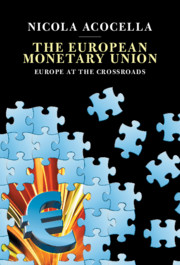Book contents
- The European Monetary Union
- The European Monetary Union
- Copyright page
- Dedication
- Contents
- Figures
- Tables
- Preface
- Acknowledgments
- Abbreviations
- Part I The Historical and Institutional Background
- Part II Institutions and Policies in Action
- 4 Asymmetries, Macroeconomic and Microeconomic Imbalances
- 5 The Great Recession
- 6 Policies and Institutions Put to the Test of the Great Recession
- 7 Asymmetries, Imbalances, Signals, and Incentives to Change
- Part III Lines of Reform of EMU Institutions
- References
- Index
4 - Asymmetries, Macroeconomic and Microeconomic Imbalances
from Part II - Institutions and Policies in Action
Published online by Cambridge University Press: 19 August 2020
- The European Monetary Union
- The European Monetary Union
- Copyright page
- Dedication
- Contents
- Figures
- Tables
- Preface
- Acknowledgments
- Abbreviations
- Part I The Historical and Institutional Background
- Part II Institutions and Policies in Action
- 4 Asymmetries, Macroeconomic and Microeconomic Imbalances
- 5 The Great Recession
- 6 Policies and Institutions Put to the Test of the Great Recession
- 7 Asymmetries, Imbalances, Signals, and Incentives to Change
- Part III Lines of Reform of EMU Institutions
- References
- Index
Summary
Chapter 4 deals first with the asymmetries between the different countries pre-existing to the EMU, due to behavioral and structural factors also of an inertial kind in peripheral countries (but also in the core to some extent). Asymmetries showed themselves mainly in the public accounts of some of them as well as in other features of the economies of all peripheral countries, such as higher inflation rates, and derived mostly from diffuse inefficiencies, but also, to some extent, from the different weight of the services and the productivity profile. Persisting these structural differences between peripheral and core countries, together with the high (low) level of domestic demand deriving from high (low) public spending and the higher (lower) wage rises, the current account of the former (the latter) would tend to be negative (positive). This did not worry the majority of scholars, but the lasting imbalances in the domestic and external accounts of each country that emerged when the Union began operating aggravated the crisis originated elsewhere, but developed in forms and with an intensity that appear as built-in in the way European institutions were devised as well as in the different growth strategies pursued by the various countries
Keywords
- Type
- Chapter
- Information
- The European Monetary UnionEurope at the Crossroads, pp. 105 - 141Publisher: Cambridge University PressPrint publication year: 2020

